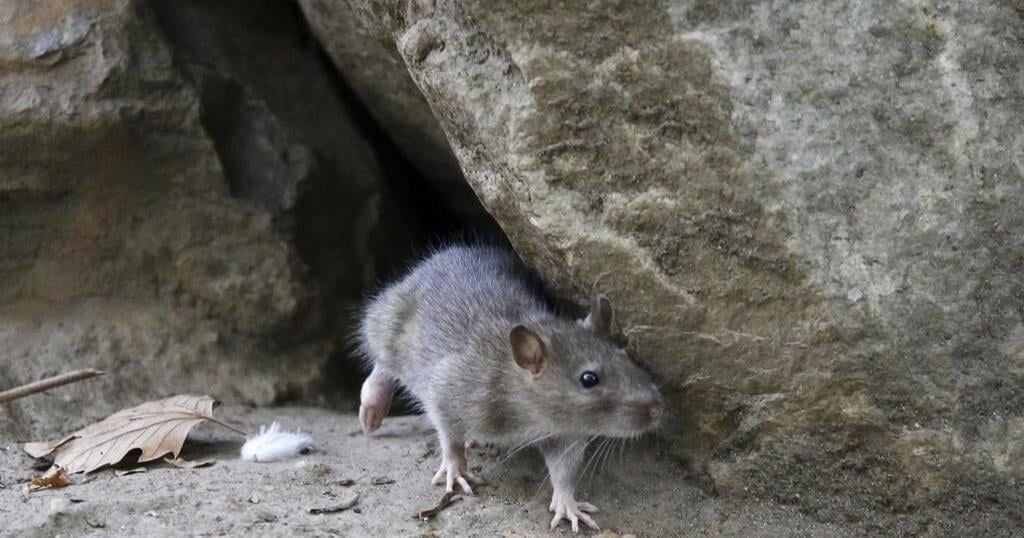Efforts are underway to combat growing rat populations in two of Ontario’s largest cities, as the rodents that typically lurk underground become more visible thanks to a combination of construction and climate change.
In Toronto, the municipality’s infrastructure committee recently adopted a motion asking city council to direct staff to craft an “action plan” to reduce rats in the city.
The motion, put forward by Coun. Alejandra Bravo and Deputy Mayor Amber Morley, is a response to residents’ concerns about a rise in visible rats in local neighbourhoods, Bravo said.
“People were talking about this in 2022 as sort of a growing problem. And then last year, last year and a half … it’s been something that’s bubbling and growing,” said Bravo, noting that residents of her ward have found themselves “overrun” by the rodents.
“It’s a really critical quality-of-life problem when people have all of a sudden been confronted with rats coming into their home or into their business or their place of work … a bunch of factors (have) come together to create this kind of perfect rat storm.”
A sharp increase in construction in the city, due to transit projects and housing development, has disrupted rat habitats deep underground, driving them into open spaces where people can see them, Bravo said.
Longer stretches of warmer weather due to climate change have also enabled the rodent population to flourish by extending their mating periods, she said.
“Cold winters helped us because that interrupted the breeding of rats,” Bravo said. “But with winters not being cold enough, that means that every two months (the rats) can breed.”
The motion put forward by Bravo and Morley – which will go to city council for a vote later this month – also seeks to have council ask the city manager to consult other communities in North America on their approach to rat reduction.
In Ottawa, the city is exploring a form of rat birth control that is not yet legal in Canada.
Local council recently supported a motion brought by Coun. Laine Johnson that asks Health Canada to expedite the review of a product called ContraPest, which is already being deployed in Seattle.
ContraPest works by inducing early menopause in female rats while reducing sperm production in males.
Johnson called it a better solution than rat poison because rats have the ability to “learn” which food sources are bad for them and adjust their behaviour.
A trial of the oral contraceptive was conducted in Washington D.C. in 2019, but the Department of Health said“the results proved inconclusive” and stopped using the product.
Meanwhile, the province of Alberta says it has been a rat-free zone for about 70 years, adhering to a zero-tolerance policy that even prohibits residents from keeping the rodents as pets.
The province says it does not allow rat populations to establish themselves and while small infestations might occasionally occur, those rats are isolated and eradicated when found. Public vigilance, prevention of rat infestations by efforts like rat-proofing structures and removing food sources, are key, the province says.
Karen Wickerson, the province’s rat and pest specialist, doubts whether the humane birth control strategy suggested by Ottawa would be enough to fight the problem plaguing North American cities by itself.
“They have to continuously eat (the birth control) for (population reduction) to continue, so I think there’s a lot kind of missing from that strategy,” she said.
Wickerson has been at the helm of the province’s rat control program for four years, and says that a multi-pronged approach is necessary, but ultimately the province prescribes to a strategy of elimination based on vigilant citizen reportage.
The project that began in the 1950s has been so successful that many Albertans don’t even know what a rat looks like anymore, Wickerson said, sometimes sending pictures of tree squirrels to the official government reporting email.
“If you’ve never lived outside of Alberta, you may never have seen a rat before and so they’re often misidentified,” she said, adding that muskrats make up about 50 per cent of the 400-500 yearly reports of alleged rat sightings.
Along with public education and participation, Alberta has established a veritable rat exclusion zone. The Rocky Mountains to the west and co-ordination with neighbouring Saskatchewan to the east have fortified the rat-free borders, something that might be difficult to establish in Ontario’s urban centres.
“For the province of Ontario, that rat is out of the gate,” said Johnson, the Ottawa councillor. “So we unfortunately have to work reactively instead of proactively as Alberta was able to back 70 years ago.”
Ontario isn’t alone in its struggle.
New York City’s mayor will be hosting the Urban Rat Summit in September, with expected participation of experts from cities like Boston, New Orleans, and Seattle.
The inaugural conference aims to bring together experts in pest control, academic researchers, and politicians in order to share best practices for rat population control in North American cities.
Bravo, the Toronto councillor, said knowledge sharing and co-ordination across regions is key to the fight.
“We’re part of a huge, continuous megalopolis here, and collaboration is always important,” she said. “If there’s good things being done in Peel or in Ottawa or in Chicago, we want to know about that.”
This report by The Canadian Press was first published July 10, 2024.
